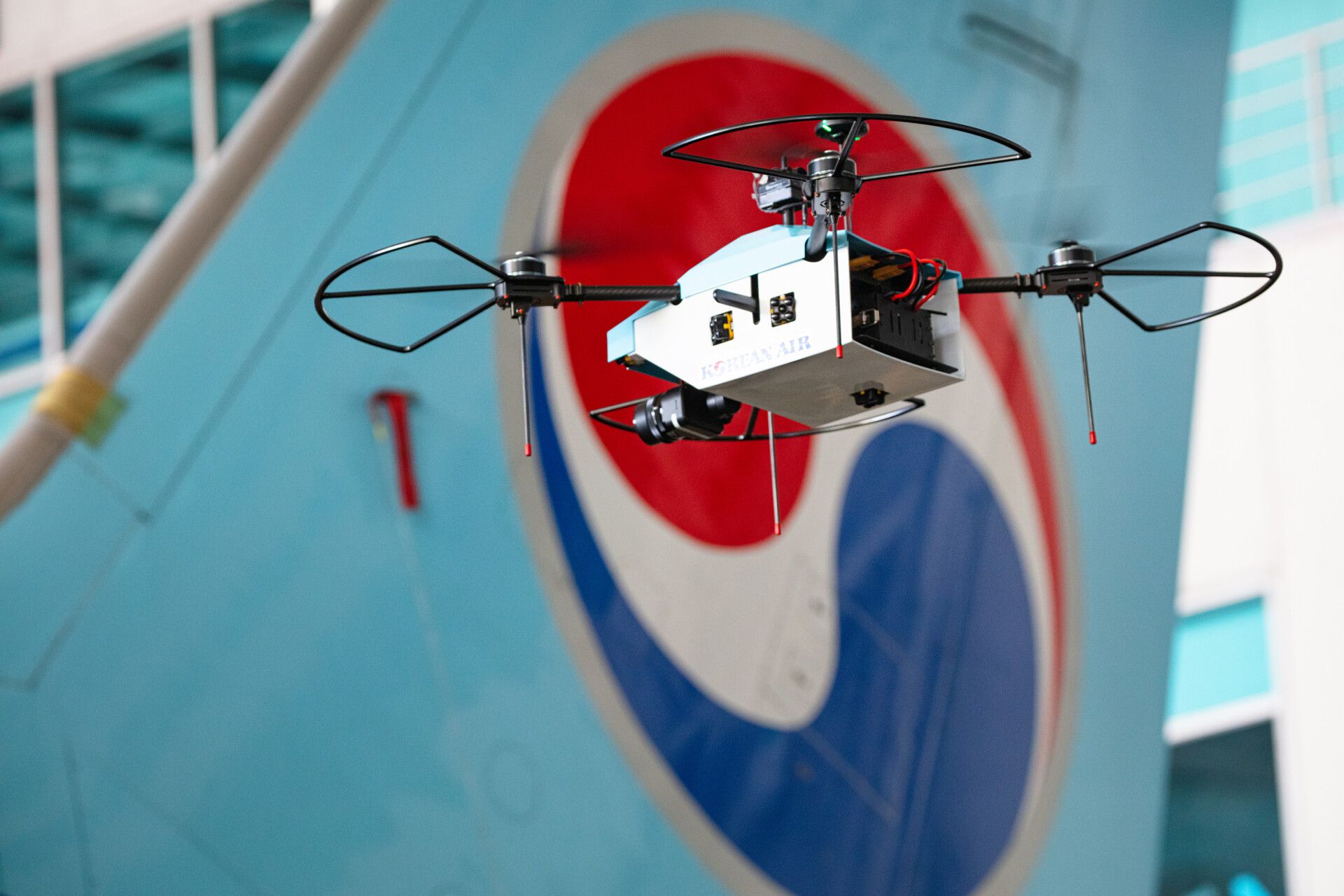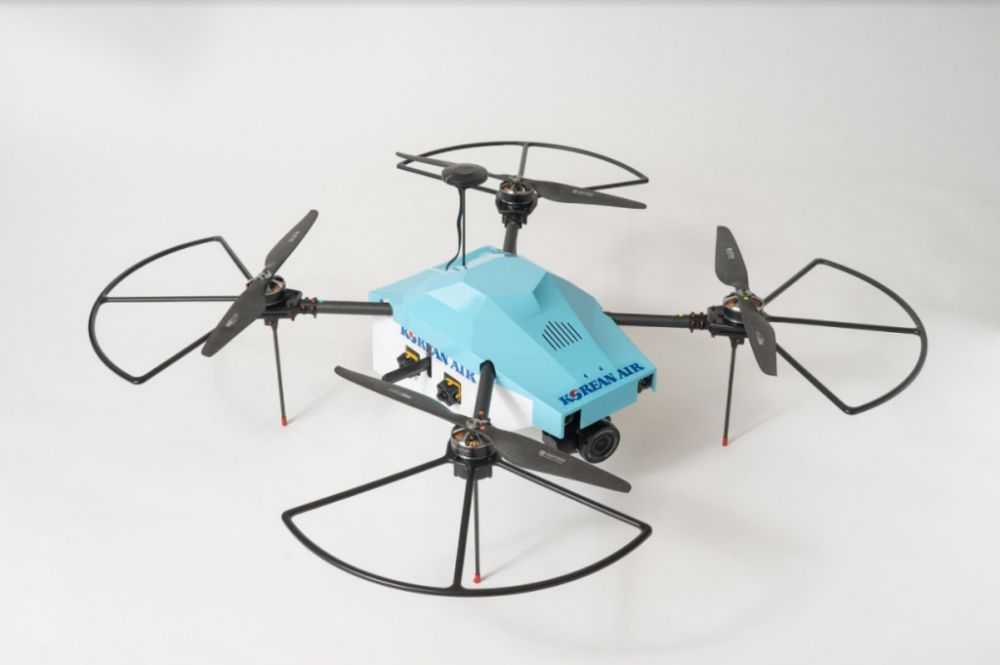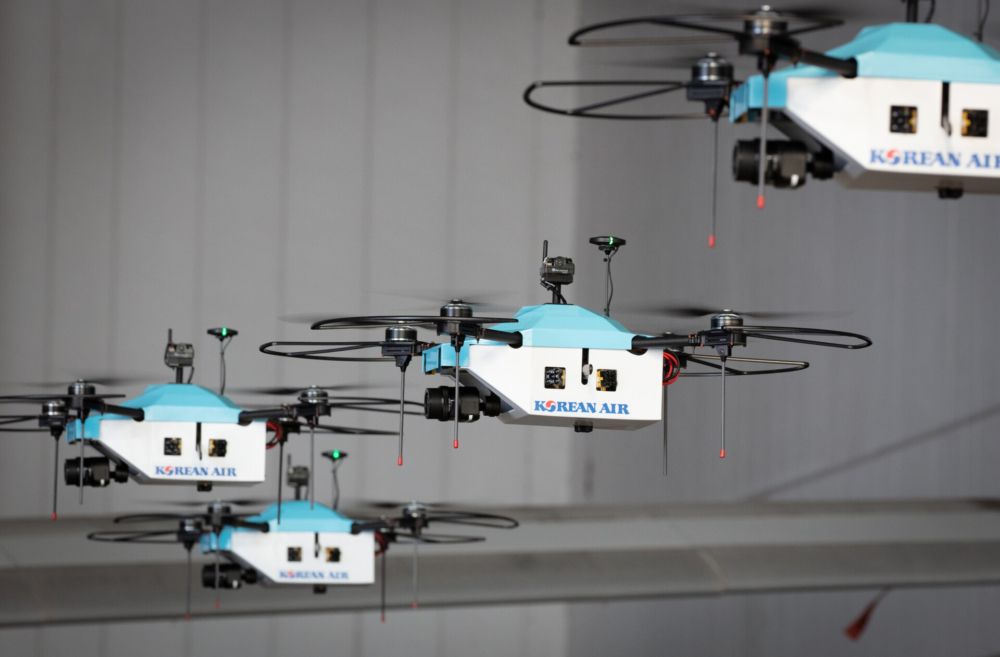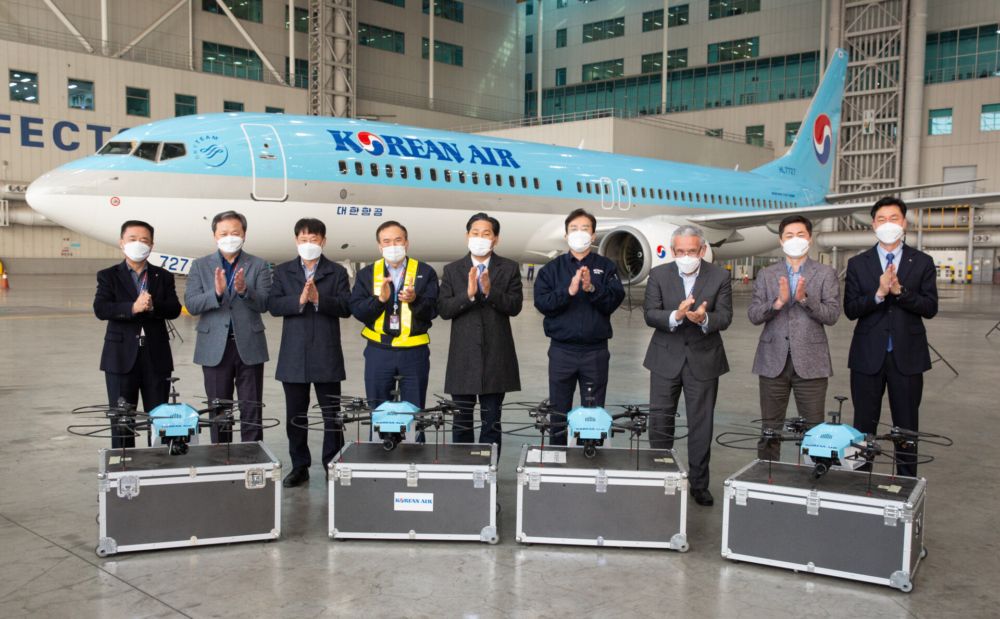Korean Air has developed a new method of inspecting aircraft using not one drone, but a whole swarm. The airline says that by using these drone ‘swarms’, it can shave up to 60% off its inspection times. The added bonus is each of the 12 lb drones gets its own Korean Air livery!
Drone swarms
The flag carrier for South Korea, Korean Air, is well known for having significant maintenance, repair, and overhaul (MRO) capabilities. The airline’s maintenance and engineering division has full capacity for heavy maintenance checks and other scheduled checks, and has four major maintenance bases spread across the country – in Gimpo, Incheon, Gimhae and Bucheon.
The airline is now working to drive down its inspection times using the increasingly popular method of drone inspections. However, the airline has now revealed that it can slash inspection times by as much as 60% through the use of multiple drones simultaneously – a method known as ‘drone swarms.’
Drone inspection is transforming the world of aircraft maintenance, and these types of activities are being rapidly rolled out to airlines around the world. However, this is the first time an airline has used a drone swarm to undertake visual checks of the aircraft it is working on.
How it works
Korean Air’s drones are around one meter in height and width, and weigh around 12 lb (5.5 kg). They are equipped with high-performance cameras, capable of identifying objects as small as 1 mm in size. This means micro defects on the aircraft fuselage can be rapidly detected, something that would be difficult to do with the naked eye.
For its swarm, Korean Air deploys four drones at once, all preprogrammed to take photos of specific areas of the aircraft. That means it doesn’t need lots of drone operators hanging about controlling the devices; rather, they can just be set up to go and left to do their job. If one of the drones fails for whatever reason, the other three take on the tasks assigned to that unit between them.
As might be expected, the control and security of these drones is crucial. As such, Korean Air has installed them with geo-fencing and collision avoidance detection to ensure they do not wander out of the hangar or crash into a nearby aircraft (or each other).
With the four-drone swarm, Korean Air says it can reduce the visual inspection time of a typical 10 hours down to just four. This 60% reduction in inspection time, coupled with the drone’s ability to see more than a human could hope to, will result in more efficient maintenance checks and more effective results. All data is shared in the cloud for feedback to airlines and staff anywhere in the world.
Drones and planes tend not to mix well, but when used in the right way, this technology can help revolutionize the way aircraft are maintained. Korean Air is planning to officially launch its drone swarm inspections next year.




